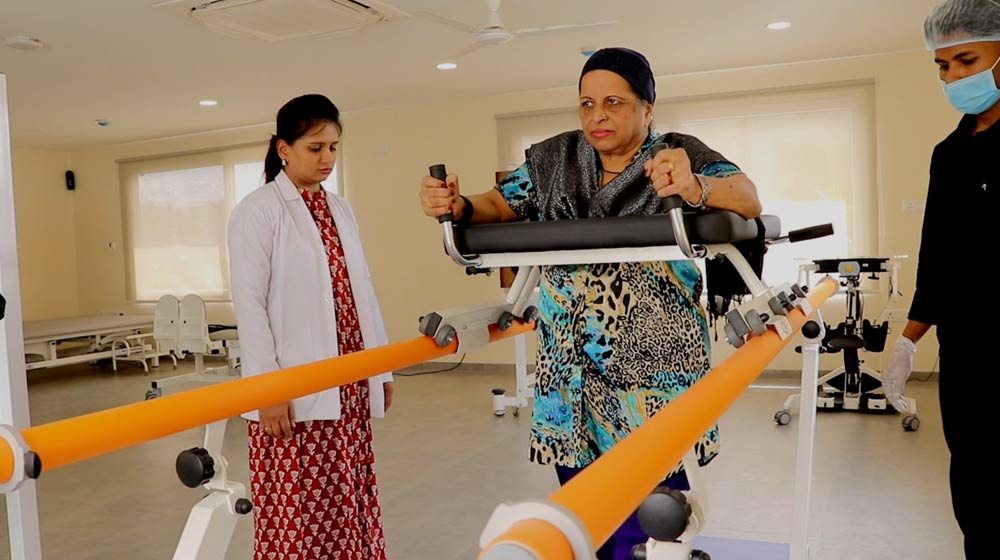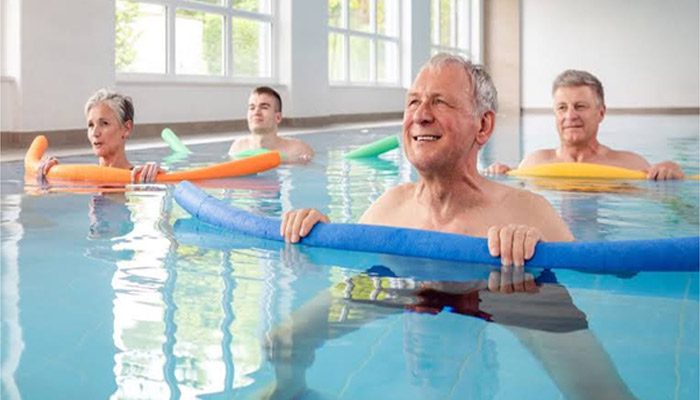
Aging in older adults contributes to possible declines in physical fitness, such as loss of muscles, mass and fibers, as well as decrease in muscle strength, endurance, and movement. The trend of inactive and sedentary lifestyle also increases in aging process, leading to noncommunicable diseases, functional changes, and immobility, with higher dependency and increased mortality risk. To extend the independent period without the need for help in older people, it is essential to sustain a healthy lifestyle; of which, exercise and physical activities are considered to play a particularly important role.
INTRODUCTION
Geriatric rehabilitation includes to help reduce the prevalence of deterioration caused by old age. In recent years, sarcopenia, a disease that is associated with age-related skeletal muscle mass loss and muscle weakness, has been attracting attention, and disuse muscle atrophy is also an important condition. For these diseases, it is recommended to increase exercise and physical activity, especially resistance exercise.
Physical activity in older people is critically important in the prevention of disease, maintenance of independence and improvement of quality of life
- Regular physical activity can bring significant health benefits to people of all ages and the need for physical activity is increasingly indicating that physical activity can extend years of active independent living, reduce disability and improve the quality of life for seniors
- Dramatic global population ageing has brought new demands to improve older people’s health by adding “quality” to their extended lives and increasing physical activity is one way to bring this.
- Resistance training will improve strength and can reverse or delay the decline of muscle mass and strength that occurs with ageing. Anaerobic exercises help to improve endurance by increasing the capillary density, mitochondrial and enzyme levels in the skeletal muscles. Together, this can help older adults to maintain their participation in ADLs and therefore maintain independence.
Exercise can also help to reduce the risk of many non- communicable diseases. Exercise has been shown to:
- Reduce the risk of coronary heart disease, stroke , types of cancers and diabetics.
- Prevent post-menopausal osteoporosis and therefore reduce the risk of osteoporotic fractures.
- Reduce the complications of immobility
- Reduce the risk of accidental falls
- Improve mental / cognitive function, reduces stress/anxiety and improve self- confidence
Being active from an early age can help prevent many diseases just as regular movement and activity can help relieve the disability and pain associated with these conditions. Importantly, the benefits of physical activity can be enjoyed even if regular practice starts late in life. It has been suggested that older adults engaged in regular physical activity demonstrate improved:
- Strength
- Balance
- Coordination and motor control
- Flexibility
- Endurance.
What Exercise is Appropriate for Older Adults?
The type of exercise and intensity will depend upon the ability of the person. Physical activity for older adults can take many forms (e.g. walking, swimming, stretching, dancing, gardening, hiking, cycling or organised exercise sessions). However, there are several important considerations specific to the older adult population with regard to physical therapy recommendations:
- The intensity of aerobic activity takes into account the older adult’s aerobic fitness.
- Activities that maintain or increase flexibility are recommended.
- Balance exercises are recommended for older adults at risk of falls.
Designing an Exercise Program
WHO has published specific guidelines (2020) for people older than 65 and recommended that both aerobic exercise and strength training should be carried out.
- Adults and older adults (>65) should do at least 150–300 min of moderate-intensity aerobic physical activity, or at least 75–150 min of vigorous-intensity aerobic physical activity, or an equivalent combination of moderate-intensity and vigorous-intense activity throughout the week for substantial health benefits;
- Adults and older adults (>65) should also do muscle-strengthening activities at moderate or greater intensity that involve all major muscle groups on 2 or more days a week, as these provide additional health benefits.
- Walking improved aerobic endurance, lower body strength, static balance, agility, and dynamic balance, and it could be promoted to improve the physical function of older adults.
- pulmonary rehabilitation shortens the recovery time of physical exercise capacity, improved some of respiratory functions

Aerobic exercise- Older persons should build up to at least 30 minutes of aerobic exercise – for example walking, swimming, water exercises, and stationary cycling – on most, if not all, days.

- Strength training- The following regimen, allows the individual to maintain bone and muscle strength. In order to continue for a week, with a day of rest between workouts
- – When repetitions can be made in good form with ease, weight lifting should be increased[27]
- The exact exercise chosen will, of course, vary from person to person. It is important that medical conditions are considered, as well as the patients’ fitness and level of function. Exercises should include both aerobic and strength training, but it should also ideally include a component of balance training and flexibility work. Options may include hiking, walking, swimming, gym, dancing, or chair exercises. It is important to find something that each person enjoys and can continue with independently.





 Health Corp LLP
Health Corp LLP